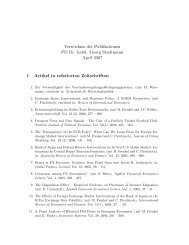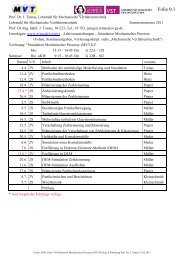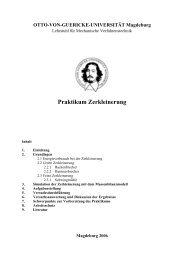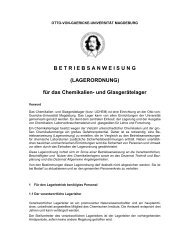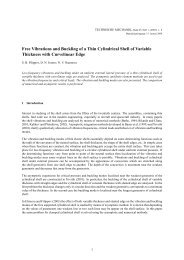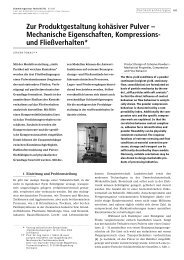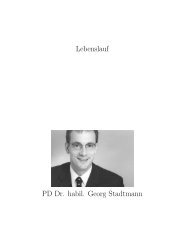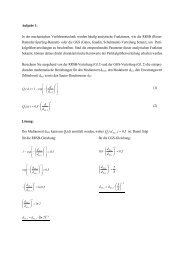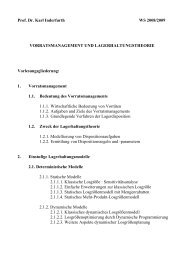Mechanics of nanoparticle adhesion â A continuum approach
Mechanics of nanoparticle adhesion â A continuum approach
Mechanics of nanoparticle adhesion â A continuum approach
Create successful ePaper yourself
Turn your PDF publications into a flip-book with our unique Google optimized e-Paper software.
<strong>Mechanics</strong> <strong>of</strong> <strong>nanoparticle</strong> <strong>adhesion</strong> — A <strong>continuum</strong> <strong>approach</strong> 25Thus, the contact area ratio κ A is expressed more in detail with Eqs. (6) and(54) for elastic κ A = 2/3 and perfect plastic contact deformation, κ A = 1 ifh K,U → ∞:hhκ K,EK,f= 2+ = 1−1⋅3A 3 3⋅hK,U3 h(63)K,UBeyond point E to point A, the same curve runs down to the intersection withthe <strong>adhesion</strong> boundary, Eq. (67), to the displacement h K,A :( ) 3*FN,unload = 2 ⋅E ⋅ r3 1,2⋅ hK −hK,A −F H,A(64)Consequently, the reloading runs along the symmetric curve( ) 3*FN,reload =− 2 ⋅E ⋅ r3 1,2⋅ hK,U − hK + FN,U(65)from point A to point U to the displacement h K,U as well (Fig. 3). The displacementh K,A at point A <strong>of</strong> contact detachment is calculated from Eqs. (57), (58), (64)and (67) as an implied function (index (0) for the beginning <strong>of</strong> iterations) <strong>of</strong> thedisplacement history point h K,U :( κ ) 2h 3K,A,(1)= hK,U − hK,f,el- pl⋅ hK,U + ⋅hK,A,(0)(66)If one replaces F N in Eq. (72) (see Section 2.3.4), by the normal force–displacement relation, Eq. (58), additionally one obtains a plausible <strong>adhesion</strong>force–displacement relation which shows the increased pull-<strong>of</strong>f force level aftercontact flattening, h K = h K,A compared with Eq. (38) and point A in the diagram <strong>of</strong>Fig. 4:F = F + π ⋅r ⋅ p ⋅h(67)H,A H0 1,2 VdW K,AThe unloading and reloading hysteresis for an <strong>adhesion</strong> contact takes place betweenthe two characteristic straight-lines for compression, the elastic–plasticyield boundary Eq. (58), and for tension, the remaining <strong>adhesion</strong> (pull-<strong>of</strong>f)boundary Eq. (67) and Fig. 3.At this so-called <strong>adhesion</strong> (failure) boundary the contact microplates fail anddetach with the increasing distance a= aF= 0+ hK,A −h . The actual particle separationa can be used by a long-range hyperbolic <strong>adhesion</strong> force curve F ∝ aK−3N,Zwith the van der Waals pressure p VdW as given in Eq. (19) and the displacementh K,A for incipient contact detachment by Eq. (66):



